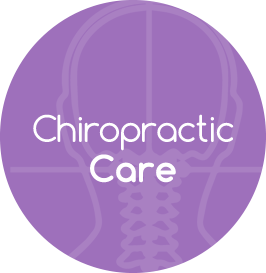Sleep & Mental Health – Facts 
Sleep disorders are among the most reported health problems in the US, affecting at least 40 million people. Researchers believe that using techniques that restore spinal stability and correct abnormal posture through proper muscle and ligament alignment while restoring balance to the body makes a difference in how we sleep and manage anxiety.
Sleep and anxiety disorders often occur concurrently and individuals with anxiety disorders are five times more likely to exhibit shortened sleep duration. Whether either sleep or anxiety is the primary underlying etiological factor may vary per individual. Therefore, any intervention approach to concurrent sleep and anxiety disorder must consider the individual, lest the practitioner’s approach end up treating the symptom without addressing the real problem/cause.
Chronic sleep insufficiency affects a third of Americans and is a recognized detractor to optimal human health and performance. It is associated with multiple serious adverse health and social outcomes, negative impacts on mental health and functioning, and decreased health-related quality of life (HR-QOL). Chronic sleep disorders have been linked to seven of the fifteen leading causes of death, attributable to several derangements to normal physiology: sleep insufficiency can impact regulation of growth hormone and cortisol and the hypothalamic-pituitary-adrenal (HPA) “stress” axis as a whole, resulting in metabolic, cardiovascular, immune system, and inflammatory consequences.
Chronic sleep insufficiency or insufficient sleep syndrome (ISS) is a “hidden epidemic” and represents a nationwide health burden. The International Classification of Sleep Disorders (ICSD-2) differentiates sleep disorders according to organic, psychosocial, and other distinctions which may facilitate an understanding of symptoms, etiology, and pathophysiology and best treatment approaches. Pharmacological and psychological interventions are often employed to treat disordered sleep, with widely varying success.
The human body is self-regulating, self-healing, homeostatic and adaptive. The nervous system including the brain, spinal cord and nerves control and coordinate these functions. The spine houses and protects the spinal cord and allows for the passage of nerves. The spine can experience structural shifts and these structural shifts can lead to obstruction of the nerves and it is this obstruction, called vertebral subluxations, that chiropractors correct.
The principle aim of care in chiropractic is to correct vertebral subluxation, which in turn may address physical and mental challenges. Chiropractic care is concerned with the totality of the human experience. Vertebral subluxations may result in autonomic dysregulation, compromising the adaptive capacity of the organism. By analyzing and correcting vertebral subluxations, a patient is placed on a more optimum physiological path, potentially increasing resilience and adaptability.
Sleep Disturbance & Anxiety Disorder
The patient reported on in the study was a 28-year-old female with complaints of sleep disturbance, anxiety, low back pain and headaches.
The chiropractor examined her and found structural shifts in her neck, midback, and low back. She had decreased range of motion and muscle imbalance in her neck, midback, and lower back. She had a gait disturbance as well. These structural shifts can lead to obstruction of the nerves and it is this obstruction, called vertebral subluxations, that chiropractors correct.
Following chiropractic care she experienced a resolution in her sleep disturbance and anxiety. In addition, her headaches and low back pain resolved and her gait pattern improved.
The study’s author called for additional research to investigate the clinical implications of chiropractic care of those with similar symptomatology.


